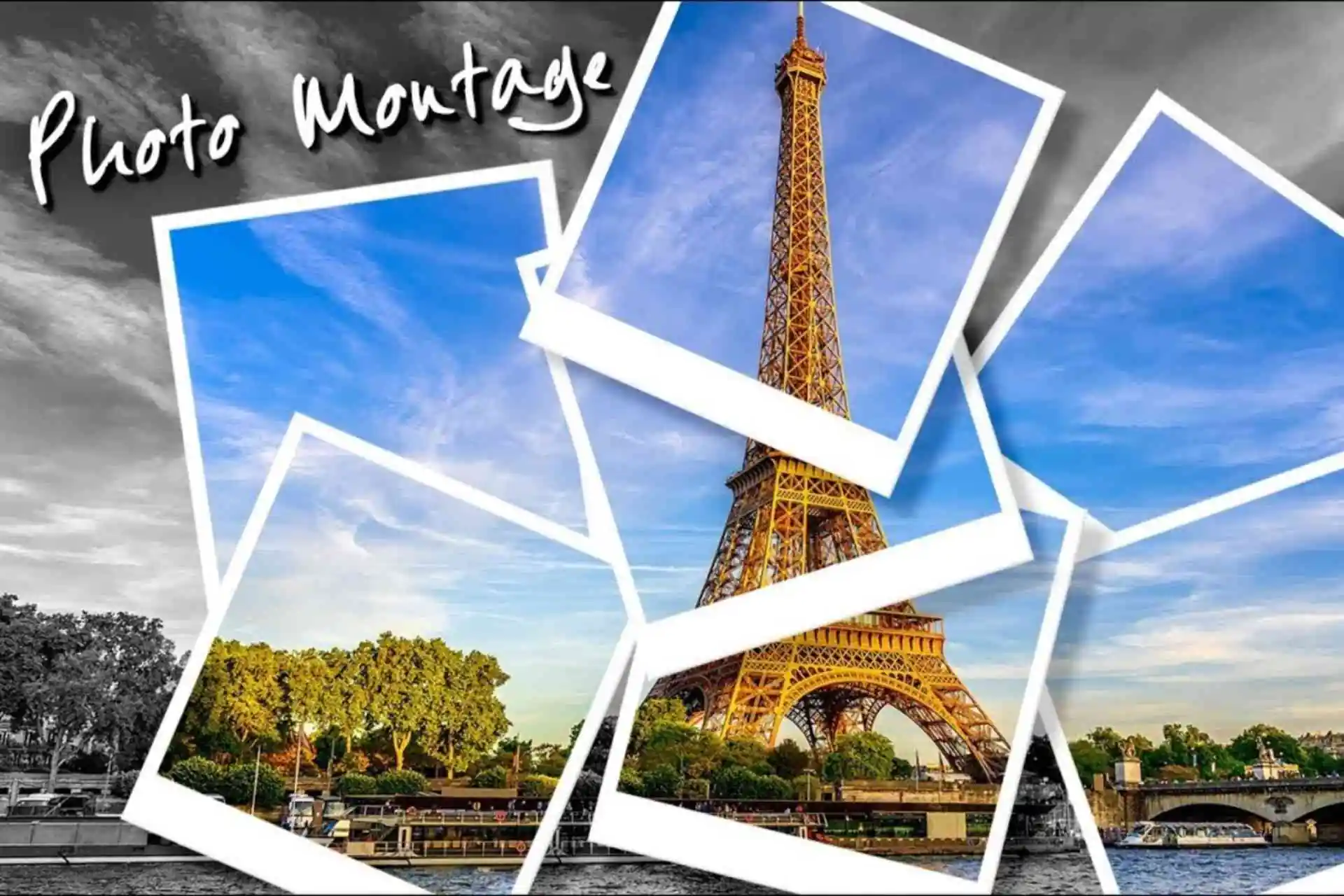
How to Add a Creative Touch to Your Images with Montage Editing
Making your photographs stand out has become vital in a world where visual content rules internet platforms. Montage editing is a technique that can significantly improve your work if you want to inject some creativity and uniqueness into your images. Montage editing enables you to make fascinating compositions that convey stories, generate emotions, and leave an enduring impact on your viewers by fusing various materials, mixing photographs, and adding artistic effects.
Embracing the Concept of Montage Editing:
Montage editing is a powerful technique that allows photographers and artists to unleash their creativity and transform ordinary images into captivating visual compositions. By embracing the concept of montage editing, you access a world of endless possibilities and artistic expression.
At its core, montage editing involves strategically arranging and blending different visual elements, such as photographs, graphics, and effects, to create a unified and compelling narrative. It goes beyond simple image editing, enabling you to construct unique stories, evoke emotions, and convey messages by seamlessly integrating various elements.
Embracing montage editing means understanding the importance of composition, storytelling, and visual impact. It requires careful consideration of each element’s placement, the interplay of colours, textures, and manipulating light and shadow. This technique allows you to create harmonious and dynamic montages that capture the viewer’s attention and invite them to delve deeper into your visual world.
By embracing the concept of montage editing, you empower yourself to explore new avenues of creativity, challenge conventional norms, and craft truly extraordinary visual masterpieces. So, let your imagination run wild, and embrace the power of montage editing to elevate your photography and unleash your artistic potential.
Selecting and Preparing Your Images:
The process of montage editing begins with the careful selection and preparation of your images. Choosing the right images is crucial for creating a cohesive and visually pleasing composition. Consider the theme or concept you want to convey and select images that align with it. Look for images with a strong visual impact and evoke the desired emotions.
Once you have chosen your images, you must prepare them for editing. Start by assessing the quality and resolution of each image. Make sure they are sharp, properly exposed, and free from distractions. Crop or resize the images if needed to enhance their composition. Pay attention to consistency in lighting, colour tones, and overall style to ensure seamless integration in the final montage.
Furthermore, it’s essential to organize and categorize your images effectively. Create a logical folder structure and use keywords or tags to make the selection process more efficient. By preparing your images meticulously, you set the foundation for a successful montage editing process, ensuring that the final composition conveys your intended message and captivates your audience.
Planning Your Montage Composition:
Planning your montage composition is crucial in creating a visually engaging and impactful montage. It involves carefully considering various elements’ arrangement, placement, and interaction within the frame to communicate your intended message or story effectively.
Start by clarifying the objective or theme of your montage. What do you want to convey or evoke? Once you have a clear vision, sketch rough ideas or create a storyboard to visualize how different images and elements will come together.
Consider the visual flow and hierarchy within your composition. Determine the focal points and how the viewer’s eye will navigate through the montage. Pay attention to the balance of elements, the use of negative space, and the overall rhythm and harmony.
Experiment with different layouts and arrangements to find the most effective composition. Try out different combinations of images, graphics, and other visual elements. Feel free to iterate and refine your composition until it aligns with your vision and captures the desired mood or message.
Planning your montage composition thoughtfully sets the stage for a captivating and visually appealing final result that effectively communicates your artistic intent.
Tools and Techniques for Montage Editing:
When it comes to montage editing, having the right tools and techniques at your disposal is essential for achieving professional results. Several software programs specifically designed for image editing and manipulation offer a wide range of features to support your montage editing endeavours.
One popular tool is Adobe Photoshop, which provides a comprehensive set of tools for blending, layering, and manipulating images. It offers advanced features like layer masks, blending modes, and filters allowing precise control over the montage composition. Other software options include GIMP, Affinity Photo, and Corel PaintShop Pro.
In terms of techniques, mastering layer management is fundamental. Understanding how to arrange and organize layers effectively lets you control the visibility and blending of different elements within your montage. Additionally, familiarity with selection tools, such as the lasso or magic wand tool, helps isolate specific areas for editing or applying effects.
Experimenting with blending modes, opacity adjustments, and layer masks allows you to integrate different elements and create smooth transitions seamlessly. Adjustment layers and filters can further enhance the overall visual impact of your montage.
Using suitable tools and techniques, you can harness the full potential of montage editing and create stunning compositions that captivate and inspire your audience.
Blending and Seamless Transitions:
Blending and achieving seamless transitions are essential aspects of montage editing that contribute to your composition’s overall cohesiveness and professional appearance. The goal is to create a montage where different elements blend harmoniously, appearing as if they belong together naturally.
One technique for achieving smooth transitions is through careful attention to lighting and colour. Paying close consideration to the direction and intensity of light in each image helps create consistency and coherence. Adjusting colour tones and hues to match across elements can also contribute to a seamless blend.
Layer masks are valuable tools for blending images. By selectively revealing or hiding portions of each layer, you can create smooth transitions between elements. Feathering or using gradient masks can further enhance the blending effect, ensuring a gradual merge.
Experimenting with blending modes, such as “Multiply,” “Overlay,” or “Screen,” can also yield interesting results. Each blending mode’s characteristics impact how elements interact and combine visually.
Lastly, evaluate the overall composition from a distance or in different viewing contexts. That allows you to identify any inconsistencies or abrupt transitions that need adjustment to maintain a seamless and visually pleasing montage.
Adding Special Effects and Enhancements:
Special effects and enhancements can elevate your montage editing to a new level, adding depth, texture, and visual interest to your composition. They allow you to unleash creativity and create unique and captivating visual experiences.
One way to incorporate special effects is by applying filters. Filters can alter your montage’s overall mood and atmosphere, giving it a distinct look. Experiment with vintage, black and white, or cinematic filters to achieve the desired effect.
Textures and overlays can also enhance your montage. They develop depth and visual interest in the elements in your composition. By overlaying textures such as grunge, bokeh, or patterns, you can create a more textured and dynamic visual experience.
Consider using adjustment layers to fine-tune your montage’s colours, contrast, and tones. That enables you to achieve a cohesive and balanced look. Dodge and burn tools can selectively brighten or darken specific areas, adding emphasis and directing the viewer’s attention.
Lastly, think outside the box and explore creative techniques such as double exposure, light painting, or adding graphic elements. These techniques can infuse your montage with artistic flair and make it unique.
By incorporating special effects and enhancements, you can unleash your artistic vision and transform your montage into a visually stunning and captivating piece of art.
Fine-Tuning and Refining Your Montage:
Fine-tuning and refining your montage is crucial to ensure a polished and cohesive final result. It involves scrutinizing every detail, adjusting elements, and making strategic decisions to enhance the overall visual impact.
Start by evaluating the composition as a whole. Pay attention to the balance of elements, the flow of the viewer’s gaze, and the overall harmony. Consider whether elements feel distracting or out of place, and make necessary adjustments to achieve a more unified composition.
Refine the transitions between elements by checking for visible seams or abrupt changes. Utilize blending modes, layer masks, and opacity adjustments to create smooth and seamless transitions.
Take a critical look at colour balance and tonal consistency. Ensure that colours are harmonious and consistent throughout the montage. Adjust brightness, contrast, and saturation as needed to achieve a balanced and visually pleasing result.
Remember to underestimate the power of small details. Fine-tune elements’ placement, size, and orientation to create a more precise and intentional composition. Pay attention to alignment, spacing, and overall visual hierarchy.
Lastly, step back and view your montage with fresh eyes. Consider seeking feedback from others to gain different perspectives and insights. This external input can help identify areas for improvement and provide valuable suggestions.
By dedicating time and effort to fine-tuning and refining your montage, you can elevate it to its full potential, ensuring a captivating and impactful visual experience for your audience.
Conclusion
In conclusion, montage editing provides a fantastic opportunity to showcase your creativity and transform your images into compelling visual narratives. You can create visually stunning compositions that captivate and engage your audience by combining multiple images, graphics, and effects. The key to successful montage editing lies in careful planning, thoughtful composition, and skilful use of software tools and techniques.




